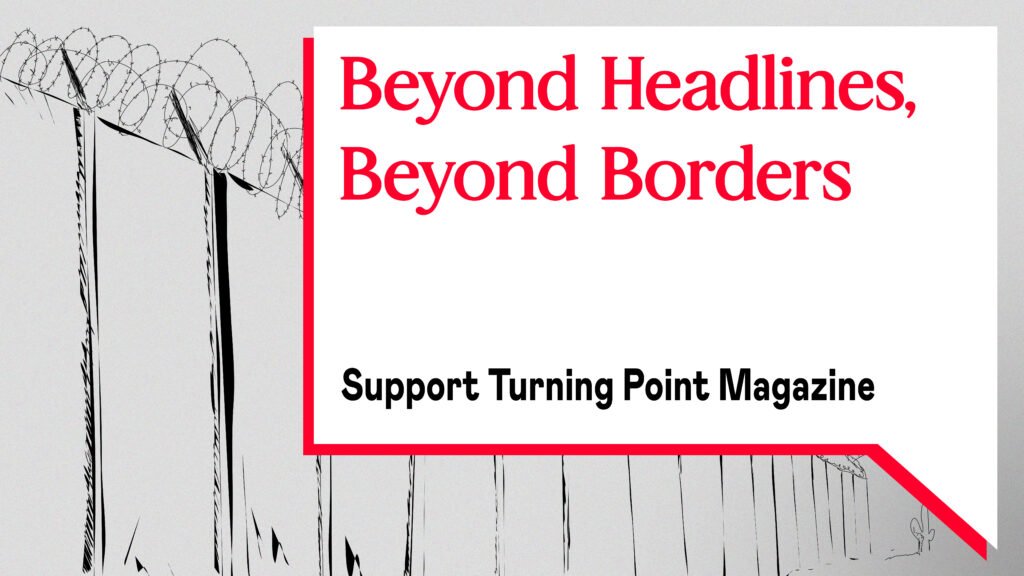Cover photo: © Michael Nigro
After becoming a feminist around the age of 12, I went through various phases: from the phase where I looked for statistics to find scientific arguments to support my new feminist values; to a phase where I couldn’t care less about statistics and thought of them often being pretty patriarchal anyway. There was a phase when I was embarrassed for being feminist, for being a woman, and for having feelings. And a phase when I fought with everyone who said anything remotely ‘problematic.’
Still, the most significant turning point for me was from thinking that patriarchy had always existed, like an almost natural thing, to learning that it had, in fact, not. Luckily, this was some years before reading Angela Saini’s newest book, The Patriarchs: How Men Came to Rule (2023). However, that didn’t diminish my excitement to finally get my hands on a whole book about the formation of patriarchy and its impact on me.
If patriarchy, as the rule of men over all other beings, hasn’t existed forever, what went wrong in history to create it? If patriarchy is a system with a beginning and an end, what does it mean to our worldview, history, and most importantly, our future? Saini asks herself and the readers these fundamental questions and then takes us on a thoroughly researched journey of 320 pages to explore it.
Angela Saini is an acclaimed British science journalist and non-fiction author. Her previous books, Inferior and Superior, scrutinized gender and race bias in science. Just as The Patriarchs, they received a lot of attention and were shortlisted for several awards. Saini’s work has been translated into German and Spanish as well as praised in reviews, ranging from The Financial Times to Jacobin.

The Patriarchs tackles the roots of male domination and shows that there is nothing inevitable about patriarchy. Regardless of the title, specific patriarchs are not major characters, which is refreshing since they often tend to get a lot of space and attention. The book is divided into eight chapters, named after surprisingly vague concepts, such as “Genesis” or “Exception.” The titling contrasts with how approachable the book is otherwise. Saini successfully writes about complicated issues in a way accessible to people outside the academic framework. Yet, despite the charged topic, the book is not politically situated—it’s almost liberally neutral.
Throughout the book, Saini is present as an explorer of sorts, visiting places and interviewing people all around the world. She follows the evolving world of research on patriarchy, revealing new methods and evidence, along with growing understanding of our own gender biases and their impact on research.
Getting to the core of the book’s main subject, the timeline on how men came to rule starts with the shift from the Neolithic to the Bronze Age, around 5000 years ago. Gender relations changed radically during that period and by the time we reach Antiquity, Saini concludes, Athens could be nominated as “the worst place in human history to have been a woman.”
If patriarchy has a beginning, the question of what existed before it suddenly becomes relevant. Here, the intellectual debates get fierce, as their conclusions bear radical consequences. Anthropologist David Graeber and archaeologist David Wengrow even describe the topic of primitive matriarchies as something of an academic no-go zone in their book The Dawn of Everything. Powerful narratives pull in different directions, and working with this specific topic is not really a career-maker. The Patriarchs starts with a map locating matrilinear populations, bringing along the awareness of their existence right from the beginning. Yet, I was surprised that besides introducing them in the first chapter, Saini spends little time discussing matrilineal societies, even about still existing ones like the Minangkabau in Indonesia or the Mosou in China.
Saini avoids taking a strong position regarding what came before the rule of men or how the shift happened exactly. Instead, she suggests a take on patriarchy as an ongoing conflict of domination over history, nature, beliefs and ways to live. For Saini, a key to understanding patriarchy is seeing it as constantly changing: not just a system that is, but a structure that is shaped and created over and over again. Perhaps even more importantly, Saini reminds us that: “the fight for a fairer and more equal society is constantly repositioning itself, too.” This is a thought to hold on to; there are pockets of the world today that aren’t organized patriarchally, and there are always movements pushing back against domination. History is not a linear progression. On top of asking how we can withstand patriarchy, we could flip the question and ask, with Saini, why and “how patriarchy manages to survive in the face of resistance?”
On top of asking how we can withstand patriarchy, we could flip the question and ask, with Saini, why and “how patriarchy manages to survive in the face of resistance?”
Discussing the origins of patriarchy also means discussing the beginning of private property and agriculture, which are often viewed as the cradle of patriarchy. Saini thinks that these factors alone can’t explain the formation of patriarchy: ”Where we really can start to spot a shift in gender relations, the first shoots of overarching male authority, is with the rise of the first states. The moment gender becomes salient is when it becomes an organizing principle, when enormous populations are categorized in ways that deliberately ignore their everyday realities.” If I ever get the chance to meet Saini, I’d like to dive deeper into this point — a point that didn’t get a lot of attention in her book.
If states and patriarchy go hand in hand, the conclusion would then be for anyone serious about smashing the patriarchy to look into anti-authoritarian politics and forms of stateless self-governance. The frequently mentioned archaeological site Catalhöyük in Anatolia is a key part of research on how societies were structured during the Neolithic period. This geographical area is especially present in the book, but apart from one sentence on the role of the women fighters in this region in the struggle against the Islamic State, I was disappointed to find that Saini doesn’t explore the work of the Kurdish Women’s Movement on matriarchal societies and the early history of the Middle East.
I rarely read a book I could recommend to my mom, my feminist friends, and the random guy reading on the subway. One of The Patriarchs’ merits is that it surely offers everyone new thoughts and information, regardless of previous experience with the topic. Saini provides an excellent overview of the research and public debates surrounding how men came to rule, and she doesn’t let us fall into easy traps of simplifying the issue. In dark times, scrutinizing patriarchy and understanding how it operates gives hope; patriarchy, as understood by Saini, is a multifaceted tool, and tools can be broken. Let that be the next phase for all of us.
Angela Saini: The Patriarchs – How Men Came to Rule, 320 pages, 2023, Harper Collins (UK Edition).
Ronja Mälström
Ronja Mälström is a writer and editor at Turning Point. She focuses on topics such as organized communities, resistance movements, and alternatives for a life beyond capitalism and patriarchy.




